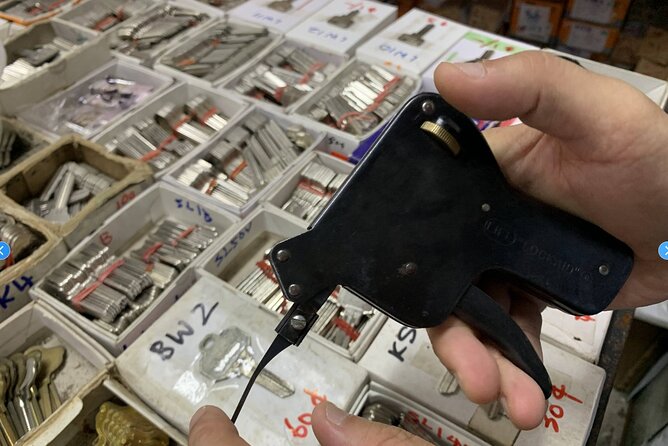Vanishing Craftsmen
In the quiet corners of bustling cities and serene villages, the echo of skilled hands shaping raw materials into masterpieces is fading. The legacy of ‘Vanishing Craftsmen’ whispers tales of dedication and artistry on the brink of extinction.
As the shadows of modernity stretch ever farther, what will become of these custodians of tradition? Stay tuned to discover the untold stories and uncertain future of these artisans, their craft interwoven with the fabric of cultural heritage, standing resilient against the tide of time.
Key Points

- Traditional artisans face challenges from modern innovations and technology advancements.
- Industrialization threatens traditional crafts with mass-produced goods.
- Reviving ancient techniques through collaboration preserves cultural heritage.
- Sustainable future prospects rely on innovative integration of old techniques with modern technologies.
Here's some more nearby activities we've reviewed
Decline of Traditional Artisans

The vanishing craft of traditional artisans is a poignant reflection of the changing landscapes in the world of craftsmanship. Artisans struggle to compete with modern innovations that offer efficiency and mass production. As technology advances, the demand for handmade, artisanal products diminishes, putting these skilled craftsmen in a challenging position.
Many traditional artisans face difficulties in adapting to the rapidly changing market dynamics, where speed and cost-effectiveness often trump the meticulous craftsmanship of handmade goods. Despite these struggles, some artisans are finding ways to incorporate modern innovations into their traditional practices, blending the old with the new to create unique pieces that appeal to contemporary consumers.
This delicate balance between heritage and innovation is crucial for the survival of traditional crafts in a rapidly evolving world.
Impact of Industrialization on Crafts

Craftsmanship across various industries has been significantly impacted by the rapid advancements of industrialization, reshaping traditional practices and challenging artisans to adapt to a changing landscape. Modern innovations have revolutionized production processes, leading to increased efficiency but often at the cost of traditional artisanal methods.
Economic repercussions have seen mass-produced goods dominate markets, squeezing out handmade crafts that struggle to compete on price and volume. Artisans find themselves navigating a complex environment where balancing tradition with modern demands is essential for survival.
The shift towards industrialization has forced craftsmen to reconsider their approaches, leveraging technology while preserving the essence of their craft.
Challenges Faced by Craftsmen Today

As the industrial era continues to shape the landscape of craftsmanship, contemporary artisans face a myriad of challenges in preserving their traditional skills amidst modern demands and market dynamics. Struggling artisans often find themselves at a crossroads, torn between upholding age-old techniques and modernizing their craft to stay relevant in today’s fast-paced world. The table below highlights some of the key challenges faced by craftsmen in the current scenario:
| Challenges Faced by Craftsmen Today |
|---|
| Balancing tradition with innovation |
| Access to modern tools and materials |
| Competition from mass-produced goods |
| Financial sustainability |
These challenges underscore the delicate balance that artisans must strike between honoring their heritage and adapting to the changing landscape of craftsmanship.
Reviving Age-Old Techniques
With a renewed passion for heritage and craftsmanship, artisans are embracing the challenge of revitalizing age-old techniques in a modern world. Through dedication and creativity, they’re breathing new life into traditional practices, ensuring that these valuable skills aren’t lost to time.
-
Reviving traditions: Artisans are delving into historical archives and collaborating with elder craftsmen to revive ancient techniques that were once on the brink of extinction.
-
Modern adaptations: They’re infusing these age-old methods with contemporary elements, creating a fusion of the past and present that appeals to modern audiences.
-
Preserving cultural identity: By reviving these traditions, artisans aren’t only keeping their cultural heritage alive but also passing it down to future generations.
Preserving Cultural Heritage Through Crafts

Preserving the rich tapestry of cultural heritage through crafts involves a delicate balance between tradition and innovation. Craft preservation plays a crucial role in the revival of cultural heritage, safeguarding traditional techniques and art forms from fading into obscurity.
By actively engaging in the creation and preservation of crafts passed down through generations, communities can ensure the continuity of their cultural identity. Through initiatives that support artisans and promote traditional craftsmanship, cultural heritage revival can flourish.
These efforts not only preserve historical practices but also provide economic opportunities for skilled craftsmen. By recognizing the value of traditional crafts and investing in their preservation, societies can maintain a connection to their past while embracing the future.
Future Prospects for Craftsmanship
Craftsmanship’s future prospects lie in the hands of innovative artisans embracing modern technologies while honoring traditional techniques. By combining the old with the new, artisans can ensure the survival and evolution of craftsmanship in the modern world.
To thrive in the future, craftsmen should consider the following:
- Technological Innovations: Integrating cutting-edge tools and processes can enhance efficiency and quality in craftsmanship.
- Sustainable Practices: Embracing environmentally friendly materials and production methods will help preserve resources for future generations.
- Skill Development: Continuously honing and passing down traditional skills while adapting to changing market demands ensures craftsmanship remains relevant and valued.
Here's a few more nearby tours and experiences we have reviewed.
Common questions

Are There Any Specific Government Initiatives or Programs in Place to Support and Preserve Traditional Craftsmanship?
Government initiatives exist worldwide to support and preserve traditional craftsmanship. These programs provide funding, training, and resources to ensure the continuation of these valuable skills. Such efforts play a crucial role in maintaining cultural heritage.
How Do Modern Technologies and Tools Impact the Authenticity and Quality of Traditional Crafts?
Modern technologies and tools have a significant impact on traditional crafts. Automation can streamline production but may compromise authenticity. Balancing preservation with innovation is crucial to maintaining the quality and essence of these time-honored practices.
What Role Do Cultural Institutions and Organizations Play in Promoting and Safeguarding Traditional Crafts?
Cultural institutions and organizations play a pivotal role in promoting and safeguarding traditional crafts by preserving cultural heritage and providing essential support to artisans. They ensure the authenticity and continuation of these invaluable artistic traditions.
How Do Traditional Craftsmen Navigate the Challenges of Marketing and Reaching a Global Audience in Today’s Digital Age?
Craftsmen enhance their visibility by establishing a strong online presence through websites and social media marketing strategies. By showcasing their work, engaging with customers, and leveraging digital platforms, they navigate global challenges effectively.
Are There Any Success Stories or Case Studies of Traditional Craftsmen Who Have Successfully Adapted to Modern Trends While Preserving Their Heritage?
Adaptation success stories and heritage preservation strategies are exemplified by traditional craftsmen who skillfully blend modern trends with their cultural legacy. Their ability to evolve while staying true to their roots inspires many.
Here's more of our most recent tour reviews happening neaby
- South East Asia: 6 Country Esim Mobile Data Plan
- South East Asia: 6 Country Esim Mobile Data Plan
- Thailand and Southeast Asia 6 Countries: Esim Roaming Mobile
- South East Asia: 6 Country Esim Mobile Data Plan
- South East Asia: 6 Country Esim Mobile Data Plan
- Singapore, Thailand & Malaysia: Unlimited Mobile Data Esim
- Singapore Nightlife: Street Food, Night Views and Drinks
- Mount Faber, Henderson Waves and Southern Ridges Tour
- Private Tour: Nighttime Sightseeing With River Cruise
- Private Airport Transfer Service to or From Changi Airport SIN
- Singaporean Cooking Class and Meal With Small Group
Last Words
To sum it up, the stories of vanishing craftsmen highlight the importance of preserving traditional artistry in a rapidly changing world. Despite facing challenges from industrialization and modernization, these artisans continue to uphold their craft with dedication and resilience.
By reviving age-old techniques and preserving cultural heritage through their work, they offer a glimpse into a rich legacy that mustn’t be forgotten. The future prospects for craftsmanship may be uncertain, but the beauty and skill of these craftsmen will always endure.





